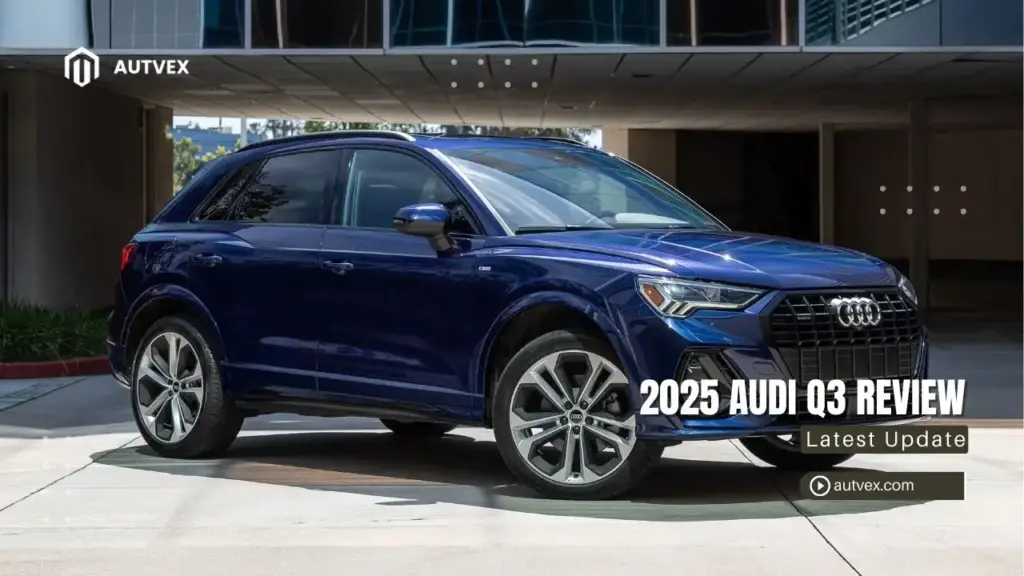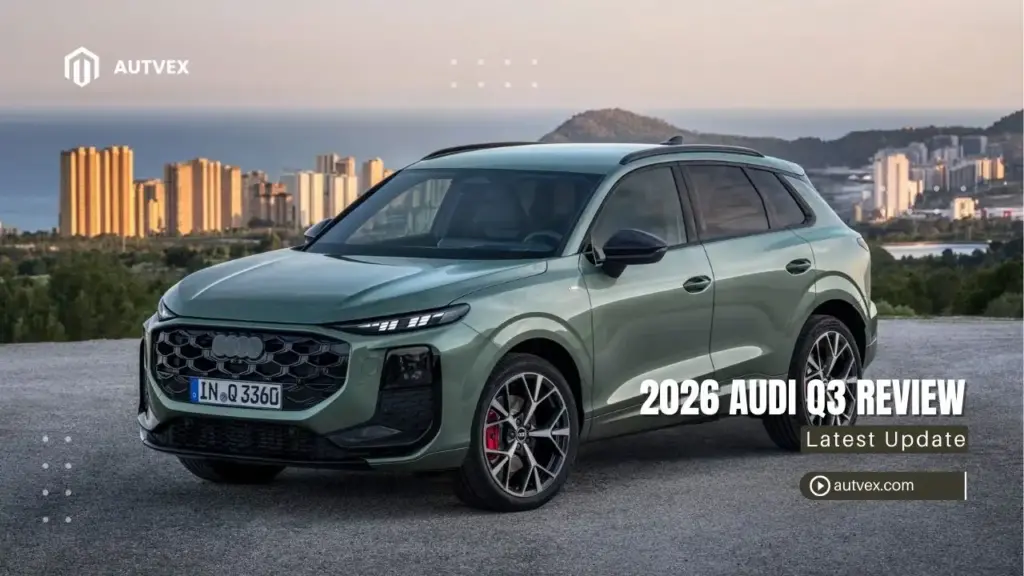You may also like:
The 2025 Audi Q3 arrives as the final year of its second-generation design with only standard adaptive cruise control as its new feature, offering 184-228 horsepower options and proven reliability at a starting price of $38,695. However, with the all-new 2026 Q3’s complete redesign featuring a revolutionary Digital Stage interior, 255 hp engine, and modern technology just months away, buyers should wait unless substantial incentives make the 2025 model compelling enough to overlook its aging technology and imminent obsolescence.
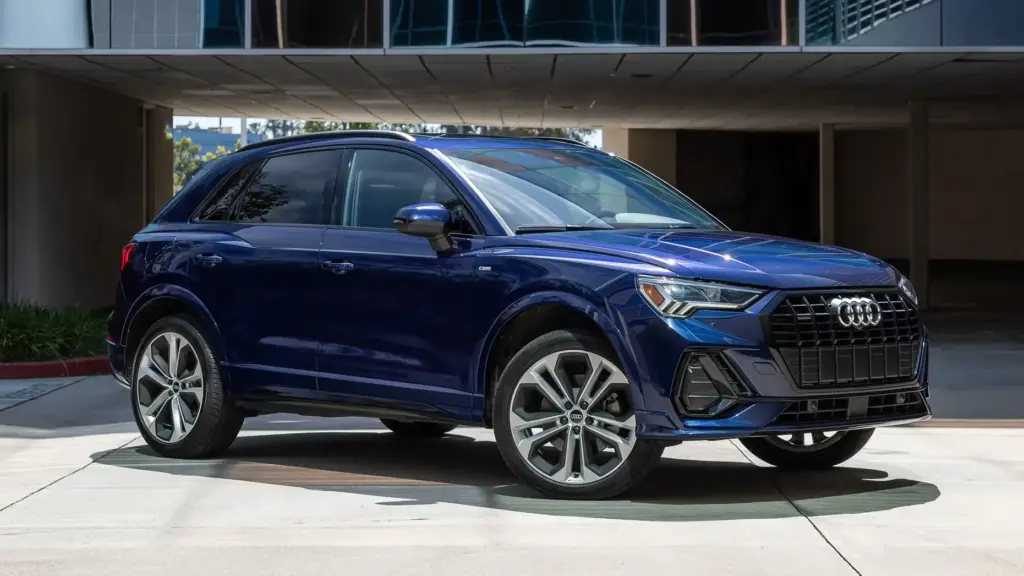
2025 Audi Q3 as a Carryover Model – What This Means
Last Year of the 2025 Audi Q3 Generation (2019-2025)
The 2025 Q3 represents the swan song of a generation that debuted for the 2019 model year. After six years in production, this design shows its age when compared to newer competitors and the incoming 2026 replacement[1]. While Audi has incrementally improved the Q3 throughout its lifecycle, the fundamental architecture and technology remain rooted in 2018-era thinking.
This extended production run has allowed Audi to refine manufacturing processes and address early quality issues. The benefit for buyers is a mature platform with most bugs worked out, though the tradeoff is technology that feels dated compared to rivals like the BMW X1 that received more recent updates.
What’s New for 2025 Audi Q3 (Adaptive Cruise Standard)
For 2025, Audi makes adaptive cruise control standard across all Q3 trim levels—previously it was optional on lower trims[2]. This single addition represents the entirety of year-over-year changes, underscoring the model’s carryover status. The system maintains a set following distance from vehicles ahead and can bring the Q3 to a complete stop in traffic.
Beyond this safety feature addition, the 2025 Q3 carries forward unchanged. The same two engine options, interior design, and technology package that appeared in 2024 return without modification. Even paint colors and wheel designs remain identical to the previous model year.
Is the 2025 Audi Q3 Outdated?
Yes, the 2025 Q3 feels outdated when evaluated against current luxury compact SUV standards. Its 8.8-inch infotainment touchscreen looks diminutive next to competitors’ larger displays, while the traditional gear selector wastes valuable console space that rivals have reclaimed with electronic shifters[1].
According to Autvex automotive experts, the Q3’s age shows most clearly in fuel economy figures. The EPA-estimated 23 mpg combined falls well below newer turbocharged competitors that achieve 28-30 mpg through more advanced engine management and mild-hybrid systems[3].
2025 Audi Q3 B9 Generation Status
While commonly referred to as part of the B9 generation in enthusiast circles, the Q3 technically uses the MQB platform designation. This second-generation Q3 (internal code 8U) has served Audi well, but the platform’s limitations become apparent when comparing MSRP values against the technology offered.
The aging platform constrains Audi’s ability to integrate newer features. For instance, the electrical architecture cannot support the larger screens and advanced driver assistance systems that define modern luxury vehicles.
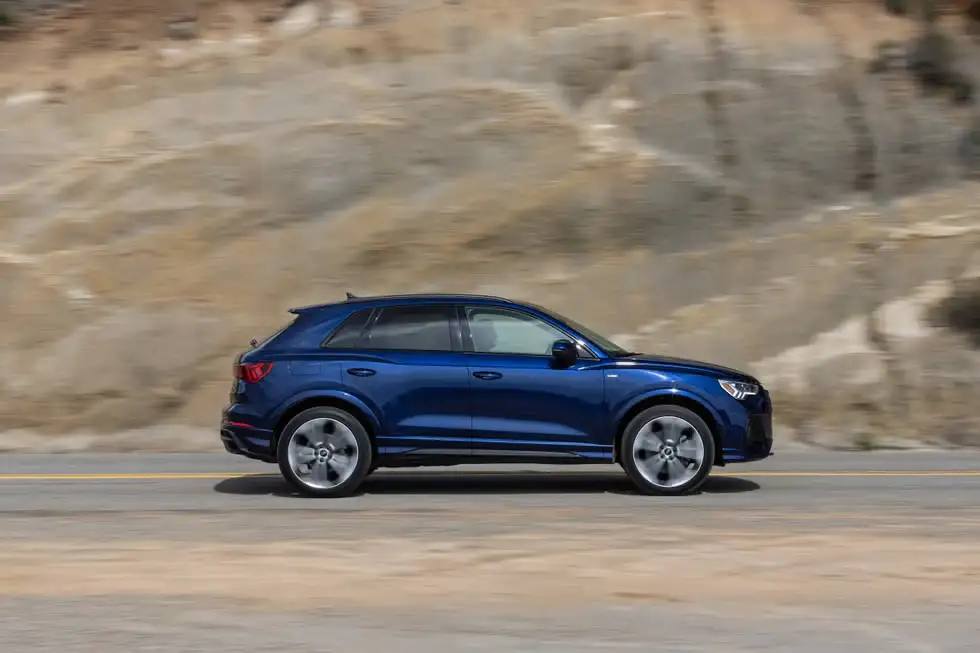
2025 vs 2026 Audi Q3 – The Critical Comparison
All-New 2026 Audi Q3 Redesign Overview
The 2026 Q3 arrives on the new MQB Evo platform with a complete reimagining of what an entry-luxury SUV should offer. Every panel changes, the interior transforms entirely, and the powertrain receives significant updates[4]. This isn’t a refresh—it’s a ground-up redesign that makes the 2025 look ancient by comparison.
The third-generation model adopts Audi’s latest design language with split headlights, a wider grille, and more athletic proportions. At approximately 178 inches long, it grows slightly to improve interior space while maintaining parking-friendly dimensions.
2026 Q3 New Digital Stage Interior
The 2026’s Digital Stage represents a quantum leap in cabin technology. A panoramic curved display combines an 11.9-inch digital cluster with a 12.8-inch central touchscreen, creating an immersive cockpit that makes the 2025’s separate screens look disconnected and dated[4].
Running on Android Automotive OS, the system operates independently of smartphones while still supporting wireless Apple CarPlay and Android Auto. This native integration enables features like YouTube streaming and advanced voice commands that the 2025’s MMI system cannot match.
2026 Q3 255 hp vs 2025 Q3 228 hp
The performance gap between generations is substantial. While the 2025’s top 45 TFSI engine produces 228 horsepower, the 2026’s updated 2.0-liter turbocharged unit generates 255 horsepower—a 27 hp increase that transforms acceleration[4].
More importantly, the 2026 achieves 0-60 mph in 5.5 seconds versus the 2025’s 7.3-second time, moving the Q3 from adequate to genuinely quick[5]. The new 7-speed dual-clutch transmission also provides sharper shifts than the 2025’s conventional 8-speed automatic.
Should I Wait for the 2026 Q3?
Unless you find exceptional incentives on a 2025 model or need immediate transportation, waiting for the 2026 makes compelling sense. The new model’s improvements span every aspect—performance, technology, efficiency, and design. Industry analysts project the 2026 will arrive at U.S. dealerships by spring 2026, making the wait bearable for most buyers[6].
Autvex recommends patience particularly for buyers who plan to keep their Q3 beyond three years. The 2025’s immediate obsolescence will impact resale values significantly once the 2026 reaches showrooms.
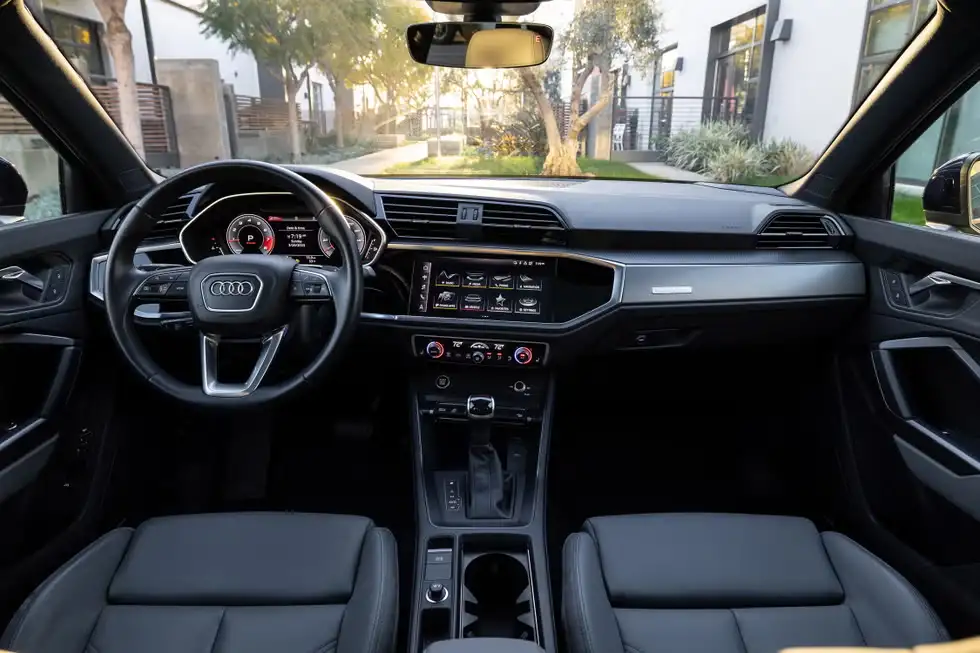
2025 Audi Q3 Performance Specifications
2025 Q3 40 TFSI Horsepower (184 hp)
The base 40 TFSI engine produces 184 horsepower at 4,200-6,000 rpm with 236 lb-ft of torque from 1,450-4,100 rpm[1]. This entry-level powertrain provides adequate acceleration for daily driving but struggles when fully loaded or merging onto highways. The engine feels strained above 4,500 rpm, lacking the refinement expected in this segment.
Fuel economy for the 40 TFSI reaches 25 mpg city and 33 mpg highway, though real-world figures often fall short[3]. The engine requires premium unleaded gasoline, adding to operating costs.
2025 Q3 45 TFSI Horsepower (228 hp)
The upgraded 45 TFSI engine delivers 228 horsepower and 258 lb-ft of torque, providing noticeably stronger acceleration[1]. This engine comes standard on S line models and optional on Premium Plus trim. The additional power makes highway merging effortless and improves overall driving confidence.
Despite the power increase, fuel economy drops only slightly to 23 mpg city and 30 mpg highway[3]. Most buyers find the performance gain worth the minimal efficiency penalty.
2025 Q3 2.0T Engine Performance
Both engines share the same 2.0-liter turbocharged four-cylinder architecture, differing only in tuning. The EA888 engine family has proven reliable across Volkswagen Group products, though premium fuel requirements increase ownership costs.
Peak torque arrives at just 1,450 rpm, providing strong initial acceleration from stops. However, the engine’s narrow powerband means frequent downshifts are needed to maintain momentum on grades.
2025 Q3 0-60 Time and MPG
The 45 TFSI achieves 0-60 mph in 7.3 seconds, respectable but not remarkable for the segment[5]. The 40 TFSI requires approximately 8.4 seconds for the same sprint. Quarter-mile times range from 15.5 to 16.2 seconds depending on configuration.
Combined fuel economy averages 23 mpg for the 45 TFSI and 28 mpg for the 40 TFSI[3]. These figures lag behind competitors—the BMW X1 achieves 29 mpg combined while offering similar performance.
2025 Audi Q3 40 vs 45 TFSI Review
The power difference between variants is immediately noticeable. The 40 TFSI feels adequate around town but requires planning for highway passing maneuvers. The 45 TFSI provides confidence-inspiring acceleration in all situations, making it worth the upgrade for most buyers.
However, the 40 TFSI’s lower price and better fuel economy appeal to budget-conscious shoppers. With standard quattro all-wheel drive on both, traction isn’t a differentiator.
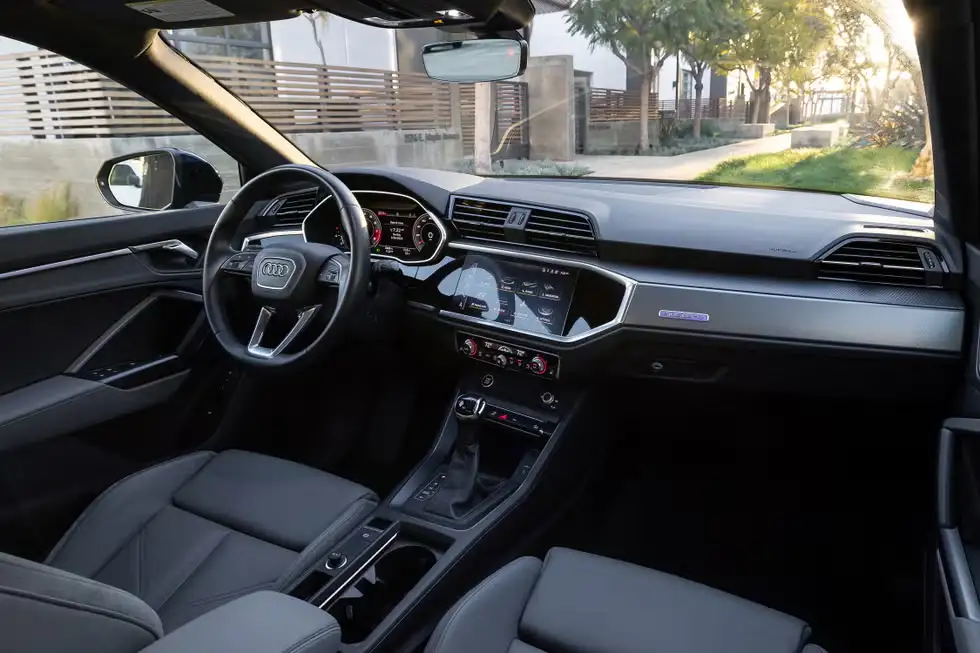
2025 Audi Q3 Price and Value Analysis
2025 Audi Q3 MSRP and Pricing
| Trim Level | 40 TFSI | 45 TFSI |
|---|---|---|
| Premium | $38,695 | N/A |
| S line Premium | N/A | $40,995 |
| Premium Plus | $42,595 | $44,895 |
| S line Premium Plus | N/A | $47,195 |
All prices include a $1,295 destination charge[7]. Options can push well-equipped models above $50,000.
2025 Q3 Discounts and Incentives
With the 2026 redesign approaching, dealers are motivated to clear 2025 inventory. Current incentives include 0.9% APR financing for qualified buyers and lease specials starting at $399/month[7]. Some regions offer additional conquest cash for competitive brand owners.
End-of-model-year discounts typically reach $3,000-$5,000 off MSRP. Savvy negotiators may secure larger reductions as the 2026 launch approaches.
Is the 2025 Audi Q3 a Good Value?
At full MSRP, the 2025 Q3 represents poor value given its aging technology and imminent replacement. However, with substantial discounts, it becomes more compelling for buyers prioritizing immediate savings over latest features.
Consider that a discounted 2025 at $35,000 offers similar luxury and performance to the 2026 that will start around $42,000. For buyers planning short-term ownership, these savings may offset the older technology.
2025 Q3 Premium vs Premium Plus
The Premium trim includes essential luxury features: leather seats, panoramic sunroof, and dual-zone climate control. The Premium Plus adds navigation, virtual cockpit, and advanced safety features for approximately $4,000 more[7].
Most buyers find the Premium sufficient, especially considering the 2026’s superior technology makes paying extra for 2025 tech features questionable. Focus on mechanical condition and warranty coverage rather than option packages.
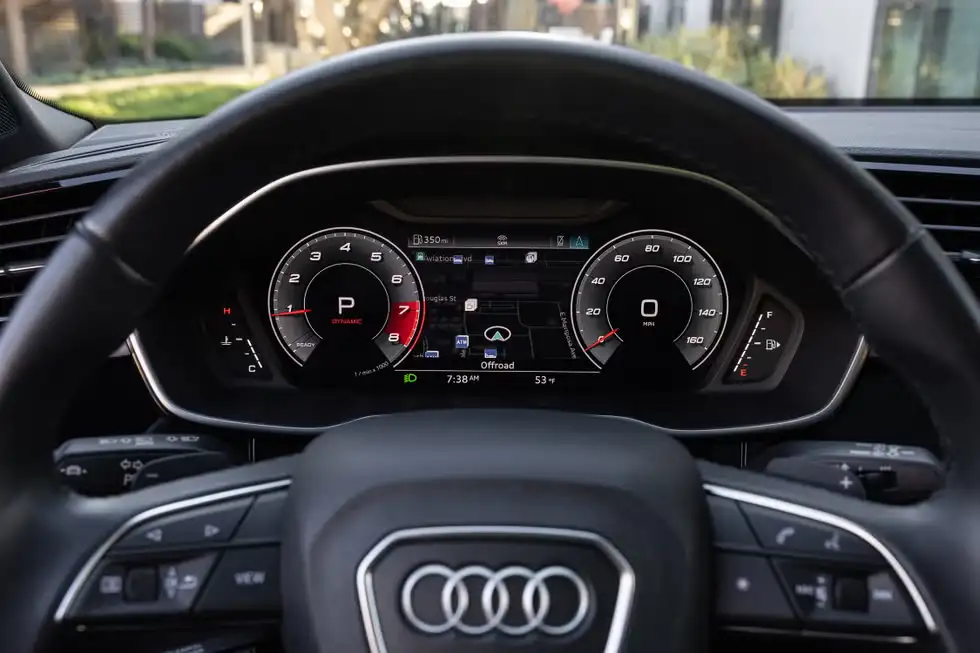
2025 Q3 vs Competition – The Problem
2025 Audi Q3 vs 2025 BMW X1
The BMW X1 received a complete redesign for 2023, making it significantly newer than the Q3. With 241 horsepower standard and better fuel economy, the X1 outperforms the Q3 in most metrics[8]. The BMW’s larger cargo area and more modern interior technology further highlight the Q3’s age.
Pricing favors the X1 as well, with comparable equipment available for less money. Only brand loyalty and Audi’s softer ride quality give the Q3 any advantage.
2025 Q3 vs 2025 Mercedes-Benz GLA
The Mercedes GLA offers similar performance with 221 horsepower but includes mild-hybrid technology for better efficiency. The MBUX infotainment system, while polarizing, provides more advanced features than the Q3’s MMI setup.
Interior space favors the Q3 slightly, though the GLA’s lower starting price and better technology make it the smarter choice for most buyers.
2025 Q3 vs 2025 Volvo XC40
Volvo’s XC40 provides superior safety technology, better warranty coverage, and comparable luxury for similar money. The Swedish SUV’s Google-based infotainment system offers functionality the Q3 cannot match.
The Q3 counters with better driving dynamics and more traditional luxury appointments, though these advantages don’t overcome its technological deficit.
2025 Q3 vs Audi Q4 e-tron
Within Audi’s own lineup, the electric Q4 e-tron offers more modern technology and design for slightly more money. With federal tax credits, the Q4’s effective price can match or beat the Q3 while providing superior performance and efficiency.
This internal competition further weakens the Q3’s value proposition. Buyers open to electric vehicles should strongly consider the Q4 e-tron instead.
2025 Q3 vs 2025 VW Tiguan
The Volkswagen Tiguan shares its platform with the Q3 but offers more space and similar features for thousands less. While lacking the Q3’s premium badge and materials, the Tiguan provides better value for practical buyers.
Recent Tiguan updates also give it newer technology than its Audi sibling, reversing the typical brand hierarchy.
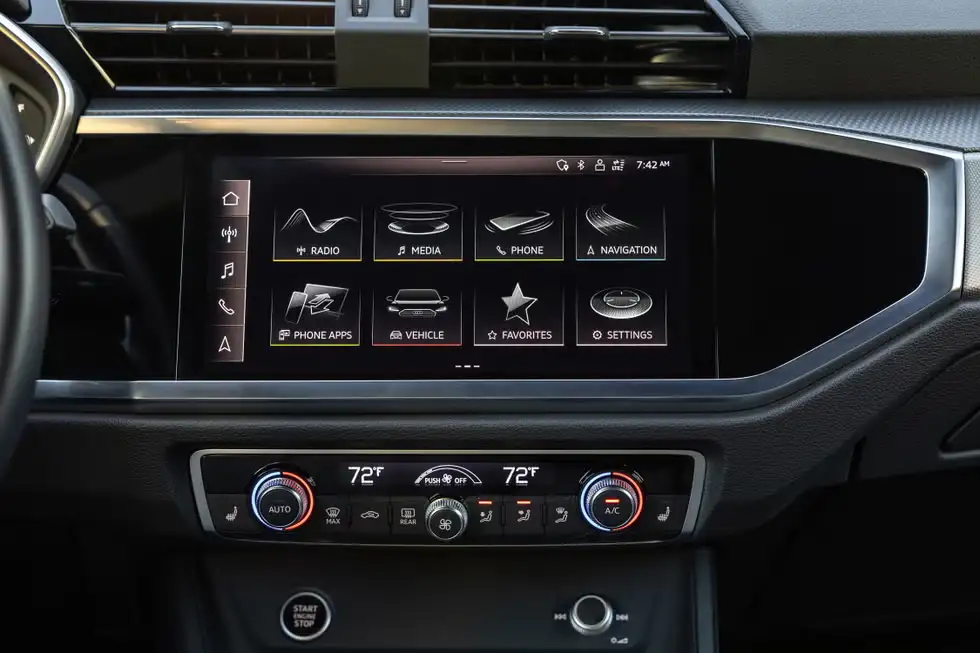
2025 Audi Q3 Pros and Cons
High-Quality Interior and Build Quality
The Q3’s cabin showcases Audi’s commitment to material excellence. Soft-touch plastics, genuine aluminum trim, and available leather create an environment that feels special[1]. Panel gaps are tight, switches operate with precision, and nothing feels cheap or hollow.
This tangible quality remains the Q3’s strongest selling point. Competitors may offer more technology, but few match Audi’s material richness and assembly precision.
Comfortable Ride and Daily Driving
The Q3’s suspension tuning prioritizes comfort over sportiness, making it an excellent daily driver. Road imperfections are well-damped, and the cabin remains quiet at highway speeds[8]. The elevated seating position provides good visibility without feeling unnecessarily tall.
Steering weight and feedback are appropriate for the segment—not too heavy for parking lots yet substantial enough for confidence at speed.
Good Tech Features (10.25″ Digital Cockpit)
While not cutting-edge, the Q3’s technology remains functional. The 10.25-inch Virtual Cockpit digital instrument cluster provides clear information with multiple display configurations[1]. Wireless phone charging and multiple USB ports meet modern connectivity needs.
The 8.8-inch center touchscreen, though small by current standards, responds quickly and logically. Physical controls for climate and volume avoid the frustration of touch-only interfaces.
Lackluster Performance and Fuel Economy
Even the stronger 45 TFSI engine feels merely adequate rather than exciting. Acceleration is linear but uninspiring, lacking the punch of turbocharged competitors. The engine note is muted and characterless, failing to engage enthusiast drivers.
Fuel economy disappoints given the modest performance. Achieving EPA estimates requires conservative driving that further reduces driving enjoyment.
Limited Space Compared to Rivals
Rear seat legroom measures just 36.1 inches, trailing most competitors[3]. Adults will find the back seat cramped on longer journeys, especially with front seats adjusted for taller drivers.
Cargo capacity of 23.7 cubic feet also lags the segment. The high load floor and narrow opening further limit practicality for larger items.
Transmission Issues and Response
The 8-speed automatic transmission, while generally reliable, exhibits slow responses and occasional harsh shifts[9]. Some owners report rough transitions at low speeds, particularly when cold. The dual-clutch option on European models isn’t available in the U.S., limiting choices.
Service centers acknowledge these characteristics as normal, though they detract from the premium experience. Regular transmission fluid changes at authorized service centers may improve shift quality.
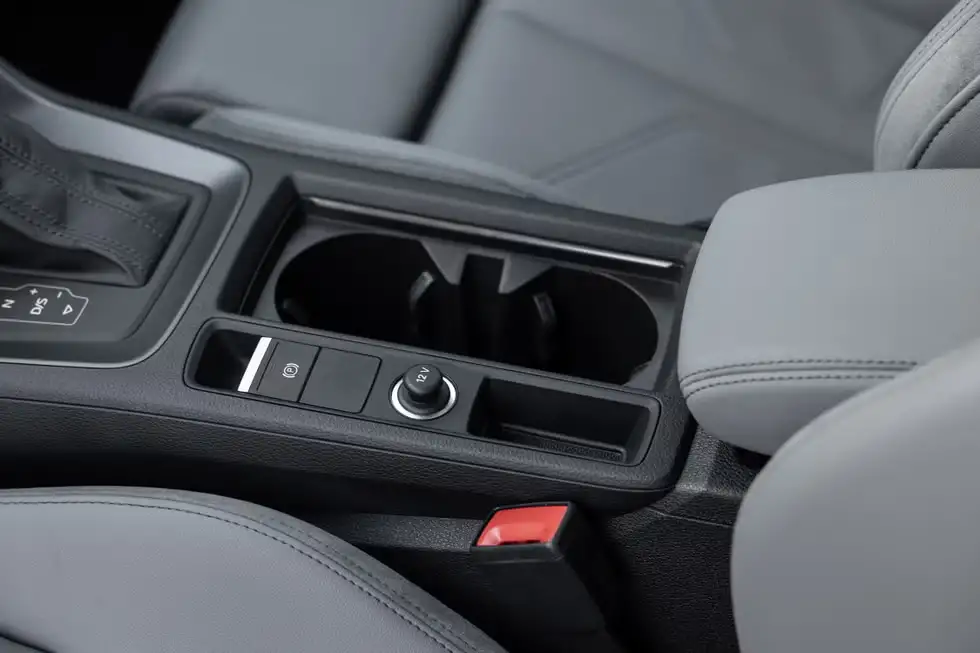
2025 Audi Q3 Reliability and Safety
Is the 2025 Audi Q3 Reliable?
The Q3’s reliability ratings are mixed. While the mature platform has resolved early production issues, owners report various electronic glitches and transmission concerns[10]. Common problems include infotainment freezes, sensor failures, and the aforementioned transmission behavior.
What Car? gives the Q3 a below-average reliability score, citing electrical issues as the primary concern[10]. However, major mechanical failures remain rare, and most issues are covered under warranty.
NHTSA 5-Star Safety Rating
The Q3 earned a 5-star overall safety rating from NHTSA, with five stars in frontal and side crash tests[11]. The IIHS awarded Top Safety Pick status when equipped with optional safety features.
Standard safety equipment includes:
- Forward collision warning with automatic emergency braking
- Blind-spot monitoring with rear cross-traffic alert
- Six airbags including side curtain protection
- Electronic stability control with rollover mitigation
Does the 2025 Q3 Have Transmission Problems?
Yes, transmission complaints are common among Q3 owners. Issues include delayed engagement from stops, rough 1-2 shifts when cold, and hesitation during acceleration[9]. The 7-speed dual-clutch transmission in some models exhibits jerky behavior at low speeds.
While rarely stranding drivers, these issues affect daily driving satisfaction. Extended warranties covering the transmission are advisable for buyers planning to keep the vehicle beyond the factory coverage period.
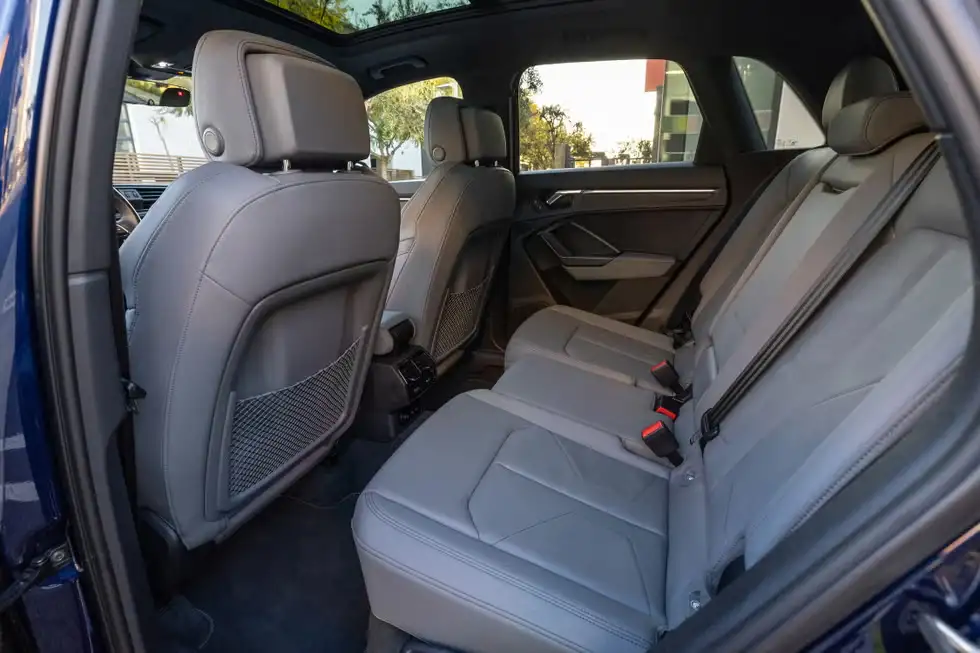
Key Takeaways
- 2025 is the final year of current generation with minimal changes
- Adaptive cruise control now standard across all trims
- 184-228 hp engines lag behind newer competitors
- 2026 redesign brings Digital Stage interior and 255 hp
- Substantial discounts needed to justify buying 2025 model
- Transmission issues reported by multiple owners
- Wait for 2026 unless immediate need or exceptional deal
Next Steps
Wait for the 2026 redesign launching early 2026 unless you find substantial incentives on 2025 models. Compare current lease deals and financing offers, or consider certified pre-owned 2023-2024 Q3s for better value while waiting for the new generation. Visit Autvex for ongoing updates on 2026 Q3 availability and pricing. If you must buy now, negotiate aggressively—dealers need to move 2025 inventory before the redesign arrives. Consider the certified pre-owned market where one-year-old models offer similar features at lower prices. Test drive both the Q3 and key rivals like the BMW X1 to understand the technology gap. Finally, factor in the immediate depreciation hit when the 2026 launches—this alone may justify waiting a few more months.
FAQs
What is new for the 2025 Audi Q3?
Only adaptive cruise control becomes standard equipment. Otherwise, it’s a carryover model with no significant changes.
Is the 2025 Audi Q3 a carryover model?
Yes, the 2025 is the final year of the second generation (2019-2025) with minimal updates.
Is Audi redesigning the Q3 for 2026?
Yes, the 2026 Q3 is a complete third-generation redesign with new platform, interior, and powertrains.
What is the difference between the 2025 Q3 and the 2026 Q3?
The 2026 features Digital Stage interior, 255 hp engine (vs 228 hp max), new design, and MQB Evo platform.
Should I buy a 2025 Q3 or wait for the 2026 Q3?
Wait for 2026 unless significant discounts make the 2025 compelling. The redesign is worth waiting for.
How does the 2025 Q3 compare to the 2025 BMW X1?
The X1 is newer with better performance and technology, making it more competitive than the aging Q3.
Is the 2025 Audi Q3 a reliable car?
Generally reliable with proven technology, though some owners report transmission responsiveness issues.
What is the horsepower of the 2025 Q3 40 vs 45 TFSI?
The 40 TFSI produces 184 hp while the 45 TFSI generates 228 hp, both from 2.0L turbo engines.
Is the 2025 Audi Q3 outdated?
Yes, as a 6-year-old design competing against newer rivals, its technology and efficiency lag behind.
What is the price of the 2025 Audi Q3?
Starting MSRP around $38,695 for base model, reaching $47,195 for well-equipped versions.
Does the 2025 Audi Q3 have transmission problems?
Some owners report the 8-speed automatic can be slow to react or clunky under hard acceleration.
Is the 2025 Audi Q3 worth buying?
Only with substantial discounts. The 2026 redesign makes the 2025 feel immediately outdated.
References
- Car and Driver. (2025). 2025 Audi Q3 Review, Pricing, and Specs. https://www.caranddriver.com/audi/q3
- Audi USA. (2025). 2025 Audi Q3 Luxury SUV. https://www.audiusa.com/models/audi-q3
- Edmunds. (2025). 2025 Audi Q3 Specs & Features. https://www.edmunds.com/audi/q3/2025
- CarDekho. (2025). Audi Q3 vs Audi Q3 2026 Comparison. https://www.cardekho.com/compare/audi-q3-vs-audi-q3-2026
- YouTube. (2025). 2026 Audi Q3 vs 2025 Audi Q3 Full Comparison. https://www.youtube.com/watch
- Audi St-Laurent. (2025). 2026 Audi Q3: What we Know so Far. https://audistlaurent.ca/2026-audi-q3
- TrueCar. (2025). 2025 Audi Q3 Review – Pricing and Trims. https://www.truecar.com/prices-new/audi/q3-pricing
- CarExpert. (2025). 2025 Audi Q3 review. https://www.carexpert.com.au/review/2025-audi-q3
- Adelaide Auto Pro. (2024). Common Problems of Audi Q3 F3 40 TFSI. https://adelaideautopro.com.au/audi-q3-problems
- Audio Range Park. (2025). The Audi Q3 2025: Features, Reliability Guide. https://audiorangepark.com/audi-q3-2025-guide
- NHTSA. (2025). 2025 Audi Q3 Safety Ratings. https://www.nhtsa.gov/vehicle/2025/audi/q3

I am a senior automotive analyst at Autvex. Expert vehicle evaluations, in-depth reviews, and objective analysis helping readers make informed automotive decisions with years of industry experience.

